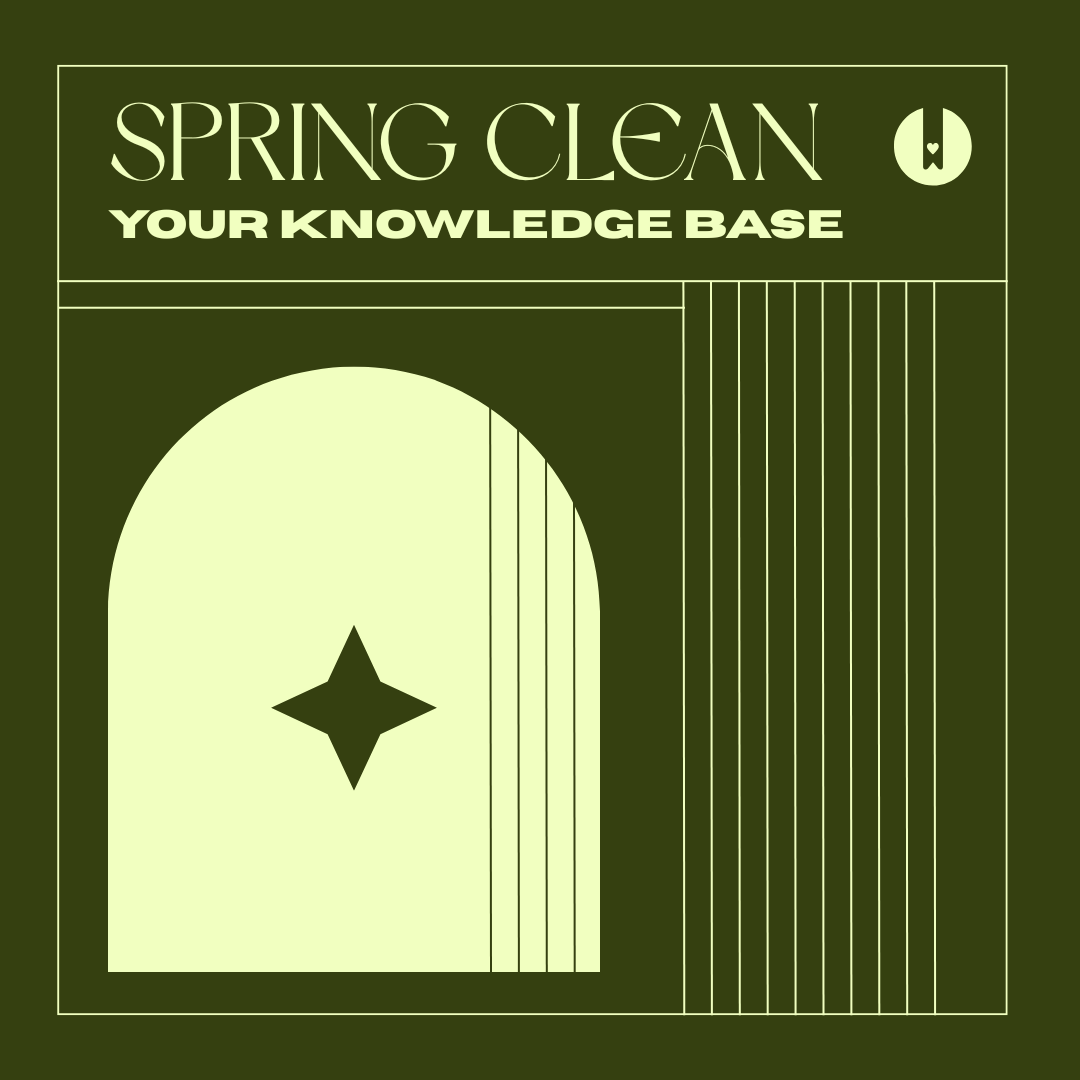
Remember the last time you felt completely confident using a new product? That magical moment when you knew exactly what the software could (and couldn't) do, where to find help when needed, and how to solve problems without endless support tickets? 😌
That feeling doesn't happen by accident.
It's carefully crafted through transparent documentation—the unsung hero of user experience and the foundation of customer trust.
At its heart, transparent documentation isn't just about explaining how to use your product.
It's about building an honest relationship with your users—one that acknowledges limitations, celebrates what's possible, and treats people with the respect they deserve.
What Exactly Makes Documentation Transparent?
Transparent documentation goes beyond functional descriptions and step-by-step guides. It's documentation with integrity—content that tells the whole truth about your product, even when that truth isn't perfect.

Traditional documentation focuses primarily on what users can do. Transparent documentation also addresses:
- What users can't do (and why)
- When features might not work as expected
- Known issues and their workarounds
- Areas where your product is still evolving
- Real-world limitations
Compare these two approaches:
Standard Documentation:
"Our integration with Salesforce allows you to sync customer data."
Transparent Documentation:
"Our Salesforce integration syncs customer data every 30 minutes. While this works great for most teams, if you need real-time updates, you'll need to manually trigger a sync or consider our Enterprise plan with continuous syncing. We're actively working on improving sync frequency for all plans."
See the difference? The transparent version doesn't just explain what the feature does—it addresses limitations, offers alternatives, and mentions future improvements. It treats the user as a partner rather than just a consumer.
The Psychology Behind Documentation Trust
Research consistently shows that honesty—even about flaws—builds stronger trust than perfect-sounding but ultimately misleading claims.
Forrester's research shows that transparency can really boost trust with customers, employees, and partners. But here's the catch —just dumping more information on people doesn't automatically build trust.
You need a thoughtful approach because clumsy attempts at transparency can actually damage trust instead of building it.
But why does this happen? Our brains are wired to value honesty, even when we don't love what we're hearing.
"In an option-laden marketplace, marketing leaders may need to reevaluate their preferred ways of winning customer trust."
Gartner's research highlights that customer trust is essential for business growth. They found that most customers expect more from brands—not just in what they sell, but in how they treat people. And many consumers flat-out refuse to do business with brands they don't trust.
The Harvard Business Review emphasizes that companies prioritizing open communication and transparent practices enhance their brand reputation and build lasting consumer loyalty.
Their research indicates that trust is a prerequisite for purchasing from a brand, establishing credibility and fostering enduring partnerships.
The Business Benefits of Documentation Honesty ✨
Transparent documentation isn't just the right thing to do—it delivers measurable business value:
1. Reduced Support Volume
When users get the full story upfront, they submit fewer surprised or frustrated support tickets. They know about limitations before they become blockers, and they're aware of workarounds for known issues.
Research indicates that a significant portion of consumers find waiting for customer service particularly frustrating. When users can access well-documented solutions quickly and easily, the need to contact support diminishes, leading to greater user satisfaction and reduced operational costs for the business.

Our content in monthly bitesized emails
Get our best content delivered straight to your inbox.
SubscribeClear, honest documentation stops problems before they start. It puts users in the driver's seat, letting them find answers through FAQs, troubleshooting guides, and helpful error messages.
2. Higher Conversion Rates (Yes, Really!)
Contrary to what you might expect, acknowledging limitations doesn't scare qualified customers away—it attracts the right ones and filters out poor fits.
"[...] high brand trust leads to an 18% increase in loyalty and 40% brand preference from customers."
Gartner's research shows that high brand trust correlates with notable increases in customer loyalty and brand preference (Gartner). By being transparent about what your product can and cannot do, you establish that trust early in the customer relationship.
3. Faster Onboarding
Users onboard faster when documentation helps them understand not just how to use the product, but what to realistically expect from it.
Transparent documentation creates clearer expectations, reducing the "expectation gap" that often causes frustration during onboarding. When users know exactly what they're getting into, they can focus on learning rather than adjusting expectations.
4. Greater Product Trust
Perhaps most importantly, transparent documentation builds durable trust that extends beyond any single feature or interaction.
This trust becomes your brand's competitive advantage—a shield against competitors who overpromise, and a foundation for long-term relationships with customers who appreciate your honesty.
Common Transparency Pitfalls (And How to Avoid Them)
Even well-intentioned documentation teams can fall into transparency traps. Here are the most common ones:
The "We'll Fix It Soon" Syndrome
Promising fixes without specific timelines creates false expectations. Instead, be honest about your prioritization:
👎 Avoid: "We're fixing this issue soon."
👍 Better: "This issue is on our roadmap for Q3. In the meantime, here's a workaround..."
Burying Limitations in Fine Print
Hiding important limitations in footnotes or behind multiple clicks feels sneaky, even if that wasn't your intention.
👎 Avoid: Mentioning critical limitations only in FAQs or footnotes
👍 Better: Including key limitations in the main feature description
Technical Jargon as a Shield
Sometimes teams use complex technical language to mask simple limitations.
👎 Avoid: "The system utilizes asynchronous processing methodologies which may result in temporal data inconsistencies."
👍 Better: "Updates take about 5 minutes to appear across the system. If you need immediate updates, use the refresh button."
Outdated Documentation
Nothing undermines trust faster than documentation that's obviously out of date.
👎 Avoid: Letting documentation linger for years without updates
👍 Better: Dating your documentation, showing last-updated timestamps, and regularly auditing content
Building Your Transparency Framework
Ready to make your documentation more transparent? Here's a practical framework:
1. Document the Full Reality (Not Just the Ideal Path)
Create documentation that reflects how your product actually works, not just how it works in perfect conditions:
- Document edge cases and their solutions
- Explain what happens when things go wrong
- Address common points of confusion
- Include performance expectations under different conditions

This approach creates realistic expectations and shows users you understand their full experience.
2. Develop a "Known Issues" Section
Every product has issues—the question is whether you acknowledge them:
- Create and maintain a known issues section
- Categorize by impact level
- Include workarounds when available
- Update as issues are resolved
- Show when issues were identified and when they were fixed

3. Use Clear, Human Language
How you say things matters as much as what you say:
- Avoid corporate-speak and jargon
- Explain technical concepts in plain language
- Use examples to illustrate complex ideas
- Consider context and user knowledge level
- Be conversational without being cutesy
The MIT Technology Review puts transparency right up there as one of the four key pillars of trust, along with humanity, capability, and reliability.
They stress how important it is to use plain language when sharing information, motives, and decisions. This matters even more with new technologies, where being upfront helps keep consumer trust intact.
4. Create a Limitations Library
For each major feature, maintain clear documentation about:
- Use limits (API call limits, user limits, etc.)
- Performance expectations
- Platform/device restrictions
- Integration limitations
- Use cases where the feature isn't ideal
Big tech companies are showing how this works in real life. Google's cloud services make transparency a priority when it comes to data protection, security, privacy, and compliance. They spell out exactly how they manage, secure, and control customer data, which gives users the confidence to use and rely on their platform (Tier1).
Microsoft does this too with their "Zero Trust" security model. They use clear documentation to explain how users can put their security strategies to work and get the most benefit from them.
5. Build Change Transparency
How you handle documentation updates says a lot about your transparency:
- Maintain a visible changelog for documentation
- Highlight significant changes
- Use version control for documentation
- Notify users of major documentation updates
- Archive old versions for reference

6. Gather and Incorporate User Feedback
Make continuous improvement part of your documentation culture:
- Add feedback mechanisms to documentation pages
- Track documentation-specific metrics
- Regularly review user comments
- Close the loop by showing how feedback influenced updates
- Thank users for pointing out gaps or errors
Measuring Documentation Transparency Impact
How do you know if your transparency efforts are working? Track these metrics:
Support Deflection Rate
Monitor how often users solve problems through documentation instead of contacting support. Rising self-service rates often indicate effective transparent documentation.

HubSpot (the marketing, sales, and customer service software folks) is big on using knowledge bases as a way to help users help themselves. Their tips for creating good knowledge base articles focus on making content clear and descriptive, so it directly tackles what users actually need.
Time-to-Value
Track how quickly new users achieve their first success. Transparent documentation helps users understand the fastest path to value.
Documentation Trust Score
Survey users specifically about documentation trustworthiness:
- "How accurate was this documentation?"
- "Did this documentation clearly explain limitations?"
- "Did you encounter any surprises not covered in the documentation?"
Research published in journals like "Electronic Markets" and "Communications of the ACM" backs this up with hard evidence. These studies show that being transparent about how you collect, use, and protect data helps build trust on online platforms and positively shapes how users behave.

Expectation Gap Measurement
Survey new customers after onboarding:
- "Did the product meet the expectations set by our documentation?"
- "Were there any capabilities you expected based on our documentation that weren't available?"
Retention Impact
Compare retention rates between users who engage deeply with documentation versus those who don't. Transparent documentation often correlates with higher retention.
Gartner's research reveals that high brand trust correlates with notable increases in customer loyalty and brand preference (Gartner).
Your Next Steps to Transparent Documentation
Building more transparent documentation doesn't happen overnight, but even small improvements can make a big difference:
- Identify one feature where your documentation could be more transparent about limitations
- Update that documentation with clear, honest information
- Track the impact on support tickets and user feedback
- Apply what you learn to other documentation areas
Remember, the goal isn't perfect documentation—it's honest documentation that respects your users and builds lasting trust.
What will you make more transparent today? 🌟





